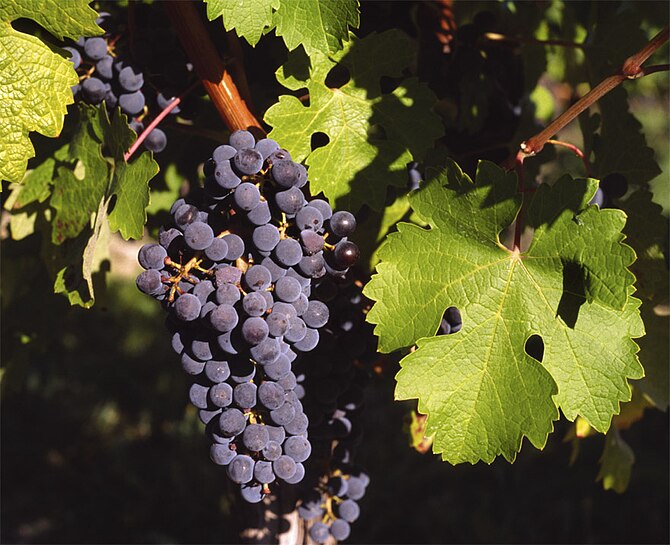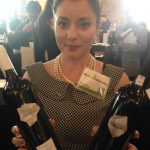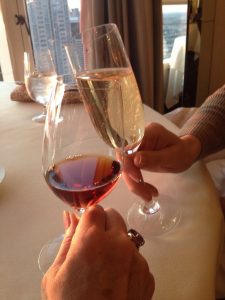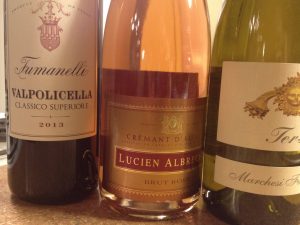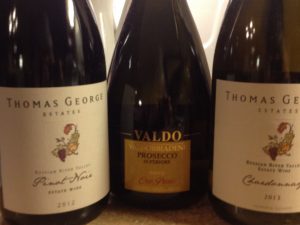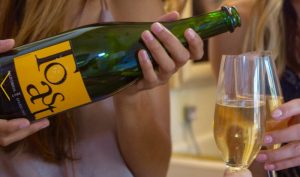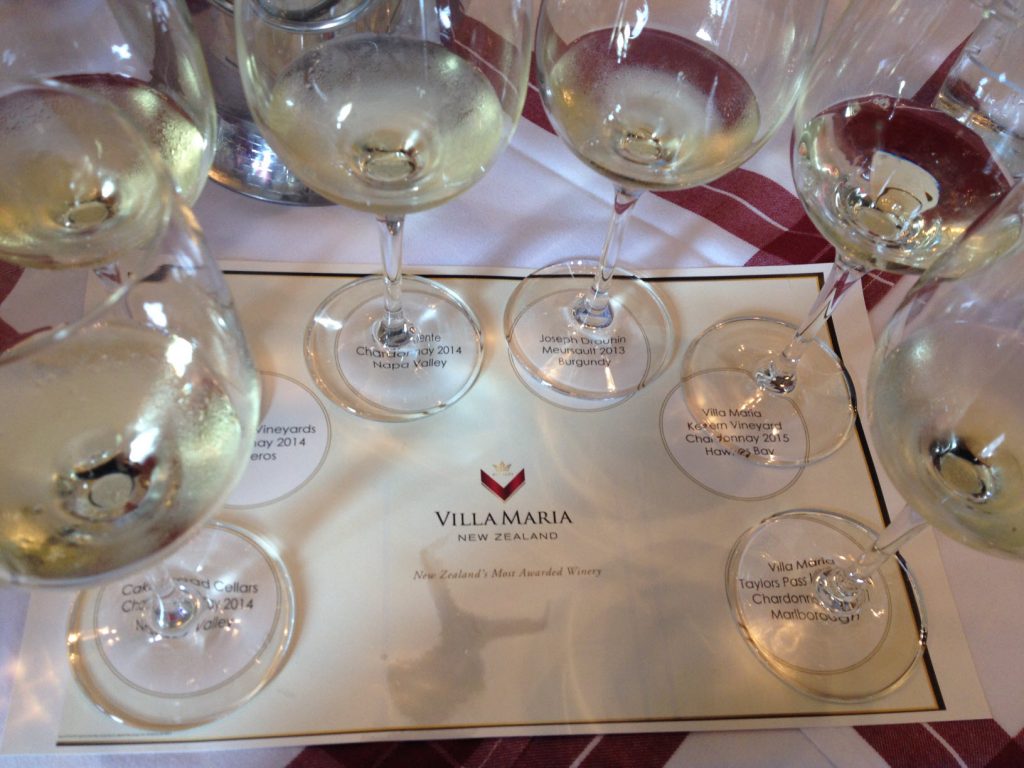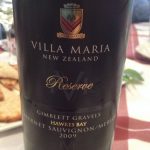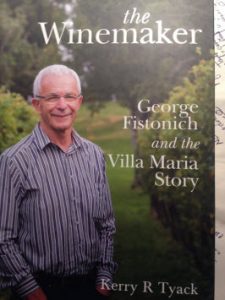
Maximillian Riedel, owner of Riedel Glassware in Austria, came to Chicago recently as part of his six-US-cities tour and staged an impressive demonstration of how the size – and shape – of your glass matter immensely to how your wine will taste.
We’ve all heard that wine glass characteristics are critical to gaining the maximum pleasure from each type of wine, but until you’ve actually experienced the difference, you might be skeptical. Attendees at West Loop’s City Winery were eager to see what this master of wineglass making would have to say.
Riedel spoke at length about the purpose of a wineglass, chief among which is to be “the loudspeaker for the wine.” Every group varietal has its own DNA, he said, and only the proper glass will showcase it to its best advantage. He also said Riedel is commissioned by wineries all around the world to create glasses for their particular grape varietal. They’ve fulfilled some heady assignments: Dom Perignon asked Riedel to create a single type of glass for all their wines. Joseph Krug asked for a glass other than a flute for his champagnes. The flute shape promotes the smell of yeast rather than fruit, and thus all champagnes tend to smell the same when served in a flute.

In regards to global warming, a critical question for winemakers these days, the wine glass makers said they have had to continue to enlarge their glasses in order to manage the increased intensity of the fruit and the higher alcohol that warmer temperatures are promoting. He said even Norway is beginning to plant grape vines. “As to whether this is a good thing,” he said, “time will tell.”
His company responded when the spirits industry first begin to honor tequila, and then sake, and now the trend is toward brown spirits, mainly in crafted cocktails – honoring the drink with everything from the size of the ice cube to the weight and configuration of the glass. Riedel has created an entire new series of glasses specifically made for various types of spirits and mixed drinks.
Riedel defended the thinness of the company’s glasses by saying this contributes to keeping the beverage longer at the proper serving temperature. When you put a cool or cold liquid into a glass that’s at room temperature, the thicker the glass the more quickly the liquid begins to warm up.

Maximillian is tall, slender, aristocratic and, especially with his delightful Austrian accent, a compelling speaker. He commanded the attention of the audience from the moment he came onstage. He spoke about how his great grandfather invented the first Riedel glasses that changed the way wine makers felt about their beloved beverage. He spoke of how his grandfather, his father and he himself have honored the tradition by continually testing and crafting new and better shapes and configurations to improve the experience of drinking quality wine and other alcoholic beverages.

We certainly expected to notice a difference in this demo, but perhaps not as much as we actually did, especially on the white wine. He started the demonstration with wine poured into plastic cups – the type you usually get at outdoor events or crappy bars. Then he reminded everyone to remember that you experience wine in four different ways: 1. The texture. 2. The temperature. 3. The taste. And, 4. The aftertaste [which includes the finish, or how long the flavors stay on the palate ~BP} before instructing us to pour the white wine into the first three glasses to begin.
A few of the tasting tips this master of wineglass architecture shared with attendees:
- Decant every bottle of wine, even champagne, and for Pinot Noir, it is a must. Aerating wine makes it absorb oxygen which helps it mature – and aging will always improve a wine. For mature wines (10-plus years), decant slowly to avoid sediment.
- Swirl your wine gently in the glass to continue aerating as you enjoy. The new optic finish (read: ever-so-slightly rippled) inside the new Riedel Performance series increases the surface area inside the glass which further helps aerate the wine.
- Do not rinse your glass with water between wines. Tap water has its own taste and aroma that can interfere.
- To properly experience a wine’s aroma, place your nose into the glass and breathe in. On this first sniff you should notice the fruit in the wine, but keep your nose in the glass as you breathe out then in again. The second time you should notice more of the minerality.
- Throw out your old traditional white wine tulip glasses (and your plastic). I noticed the greatest difference here. White wine in the small traditional-shape glass gave off very little aroma except alcohol. Virtually nothing at all in a plastic cup. Once you pour and swirl it in the much wider and more rounded bowl of the balloon-shaped Riedel Restaurant Oaked Chardonnay glass – designed in 1973 for Italian sommeliers (and in Europe, Riedel said, they use this glass for gin & tonics) – you get the full effect of all aromas: fruit, yeast and oak. He said you end up sort of sucking your wine out of this shape, so that it hits your tongue higher up, thus avoiding the tip of the tongue (see **tip below). But at least as impressive to me was the transformation of the texture, compared to drinking from the original glass. In the new glass the wine comes into its silky and creamy natural state. A real eye-opener.
- White chocolate goes best with a quality Pinot Noir. He had us chew a piece of it, then sip the wine with the chocolate still melting in our mouths. Nice. [And how we love dark chocolate with Cabernet!]
- Some of the words Riedel used to describe the way wines can taste/feel – good or bad: thin/heavy/viscose/jammy, rough/smooth/creamy/silky, salty/dry/green/bitter, heavy/light and so on. If you think about it, you’ve probably experienced all of those reactions to a wine at some point, but perhaps, like many of us, were not always quite able to name them. [The magic word for good wine is “balanced” so that no one of these qualities overpowers the others. ~BP]
In case you need additional expert testimony, Robert Parker, the famed wine critic, uses Riedel glassware for his taste testing. And most of Riedel’s business is from home eonophiles rather than restaurants. Only a guess – restaurants are businesses and the cost and relative fragility of these fine Riedel glasses may be a deterrent.
**Riedel said the tip of your tongue is an “acidity bumper” and that this is desirable when you want the acidity to counterbalance the fruit – which is why the unusually shaped Performance Pinot Noir glass is designed specifically to make the wine touch the tip of your tongue immediately. Works beautifully.





